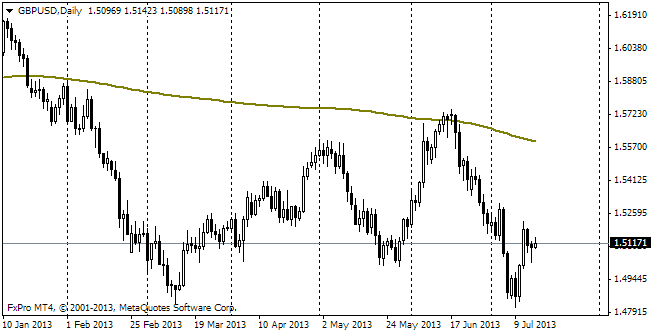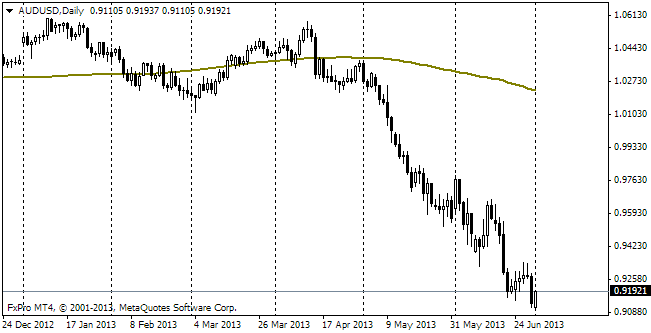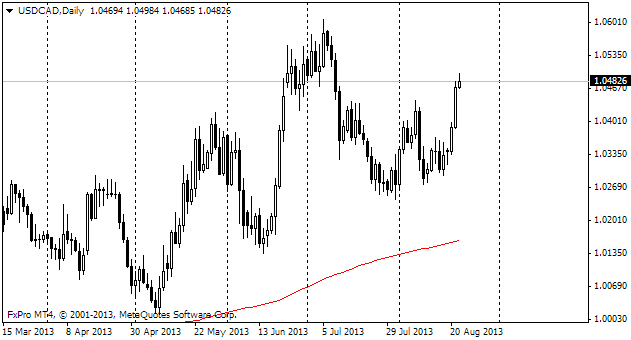EUR/usd
The euro is still under pressure. The support at 1.3750/60, which had been strong at the beginning of the week, was surrendered by the bulls yesterday. By the way, similar performance is observed in the US stock markets. They are sagging under the burden of rate-increase expectations. However, the dollar cannot start a real rally as there is no unanimity in the FOMC. Evans, for example, expects a rate increase in the second half of 2015. It somehow contradicts the core market forecast, according to which the rates will be raised in the first half. The dollar is depreciating against the commodity currencies (see below), but remains relatively strong against the single currency, regarding which the markets will be looking for a new cause of the ECB's rate cut today. Today we expect a release of Germany's inflation statistics. The data on separate lands will be coming all through the day and may affect the pair if they differ much from the expectations. The general estimate is published about 13 GMT. It will in many ways determine the inflation trend for the whole euro-region and the latter will already determine the market sentiment regarding the ECB's policy. Now the annual CPI is expected to slow down to 1.1%. And if the data are weaker, it will put additional pressure on the euro. There is one more reason for depreciation of the single currency. This is reduction of interest rates in the debt markets. The divergence in the periphery countries' bonds isn't as strong now as it was at the hottest moments of the EU sovereign debt crisis. Besides, over that time the ECB has lowered the rates. It makes euro loans less lucrative and may contribute to weakening of the currency just like earlier the higher rates in the debt market helped the euro grow against the dollar (except for the most acute phase, where it was believed that the eurozone was on the edge of the breakup).
GBP/USD
The sterling keeps growing. It seems that the cable is serious about returning above 1.67. In addition to the hawkish comments of the MPC, we saw excellent retail sales data for February. As reported by ONS, the growth made 1.7% m/m against the expected rate of just 0.5%. It is true that this indicator has looked quite volatile in the recent three months (+2.5%, -2.0%, +1.7%), but it is also true that the annual growth rate remains high as compared to what we've observed for the last ten years. It is a sound reason to purchase the pound, despite the obvious stalling in the stock exchanges and certain difficulties with growth of the euro.

AUD/USD
It's impossible to stop the aussie. The change in the tone of the RBA's comments in February, growth of prices of the metals exported by Australia and heavy selling ensured a perfect background for impressive growth of the AU currency. Purchasing of the Aussie, decreased sharply against the yen, dollar and kiwi, long ago turned into growing on closure of stop orders in short positions. The growth has held for six days in a row and seems to target 0.93. Breaking through the 200-day MA this week should only intensify purchases of the Aussie by the funds, rebalancing their portfolios by the new quarter.

USD/CAD
The Canadian Loonie is again in traders' favour. This week the currency has started a real rally, supported by growth of oil prices. A bit over a week ago the pair was at 1.1275 and now trading is held at 1.10. In our opinion, here can be a stop as at the end of the quarter the dollar often gets some support and usdcad looks strong enough to provoke profit-taking among short-term speculators (the long-term ones were collecting their profits right during the described rally).
